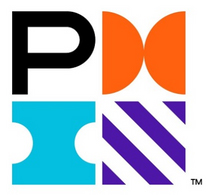Online Project Management Certification

Online Project Management Certification
Online Project Management is a comparatively fresh profession to engage with. But that does not mean it has to go unskilled. Even the most potent managers need some recognition for their work. Project Management institute (PMI) offers numerous certifications to hallmark the efforts of project managers.
A software professional can commence his / her excursion for certified Online Project Management courses starting with generic PMI certifications and can expedite to advanced, applied and international certifications.
Online Project Management certifications are affiliated with the guide to Project Management Body of Knowledge (PMBOK Guide) – an IEEE and ANSI standardized chronicle documenting the guidelines and techniques for project management. The organization’s clients are also contended with the knowledge that a certified manager is monitoring their project.
Just obtaining the certifications is not aplenty. PDUs are to be earned to maintain the certificate. Professional Development Units (PDU) are credited to managers such that 1 hour of project management endeavors earn him / her single PDU.
Undertaking classes, personalized academic works, mentoring some project management, presentations etc. will procure a certified manager PDUs. Hence, PMI makes sure that the managers remain ever enthusiastic about project management activities. All the activities are elucidated in an open source PMP handbook in more detail.
 Ad hoc, PMI offers five primary credentials for Online Project Management Certification:
Ad hoc, PMI offers five primary credentials for Online Project Management Certification:
Project Management Professional (PMP)
This certification assures the client that the beholder can govern the projects most efficiently. International Organization for Standardization (ISO) has credited PMP with an ANSI/ISO/IEC 17024 standard. Only experienced project managers can apply to this course.
The professionals who comply with the requirements can register online. A PMP Handbook is available for more information. Once the multiple choice questionnaire examination is passed, maintaining this certification requires the manager to procure 60 PDUs or more per 3-year period.
Certified Associate in Project Management (CAPM)
For beginners, PMI suggests CAPM certificates. Applying for PMP certifications demands some substantial years of experience. Novice project management enthusiasts display their axiomatic knowledge of management terminologies with a CAPM certification. The credential can be renewed every 5 years. Procurement of PDUs is not a requisition here.
Program Management Professional (PgMP)
It is an advanced credential for established and experienced project managers. Possession of this certification will empower him /her to lead multitudinous projects simultaneously. Embracing a PgMP certified manager will help any organization ascend above all its contemporaries. Experience in program management activities is also necessary for registration. 60 PDUs per 3 year cycle maintains PgMP certifications.
PMI Risk Management Professional (PMI-RMP)
Risk Management is one of the most sought after trait in project managers. Acquiring a certificate stating the same can make any manager invaluable to the organization. Risk management education is a requisite for applying. Earning 30 PDUs per 3 year cycle is essential to conserve the certificate.
PMI Scheduling Professional (PMI-SP)
No project can go anywhere without creating a careful and abstruse schedule. Every minute and every second is to be accounted. This esoteric art can be backed up by a PMI-SP credential. Credential maintenance requires 30 PDUs per 3 year period.
PMI Agile Certified Practitioner (PMI-ACP) certificate will also be instigated shortly. Other than these PMI aligned certifications, various established universities offer auxiliary trainings for master certifications for Online Project Management Certification. Online courses for preparing PMI certifications and earning PDUs are also available.
A certified project manager is far more celebrated and respected than his / her uncertified counterparts. Possessing Online Project Management certificates are not a compulsion but they can certainly decorate any manager’s signature.
 Quick Links to Online Project Management Certification
Quick Links to Online Project Management Certification
- Project Management Professional (PMP)
- Program Management Professional (PgMP)
- Portfolio Management Professional (PfMP)
- Certified Associate in Project Management (CAPM)
- PMI Professional in Business Analysis (PMI-PBA)
- Agile Certified Practitioner (PMI-ACP)
- PMI Risk Management Professional (PMI-RMP)
- PMI Scheduling Professional (PMI-SP)
